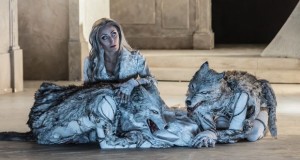
Guglielmo Ratcliff
By Pietro Mascagni
At the National Opera House
Review: Tom Mooney
Successfully resuscitating an opera fossilised by neglect or indifference, such as Guglielmo Ratcliff, a tragedia in four acts, though with an approximate performance time of two hours, depends primarily on vision.
The libretto is a like a dawn in winter, just barely suggestive of what may arise, but what emerged at Wexford, from David Agler’s bold choice to the chemistry strung together by director Fabio Ceresa, set designer Tiziano Santi and costume designer Giuseppe Palella, was an illuminative fabrication of brilliance.
There is too, in opera, the importance of pace: conductor Francesco Cilluffo shepherded this fantastical tale on a Shakespearean scale – with perhaps a greater body count than Macbeth – and interwove the melodrama, an absolute visual feast, with stirring decorative musical flights.
Strong characters abound in the mayhem of star-meshed lovers, where only the fittest survive, and the principals, specifically Mariangela Sicilia, Angelo Villari and David Stout, need to be of equal strength to balance the drama, which is both unforgiving and unrelenting.
Wexford achieved even higher levels of excellence in design and presentation, a credit to the National Opera House, with deft and ingenious sets and costumes, right for the music, right for the libretto and a pleasure for the senses to absorb.
Annunziata Vestri’s casting as Margherita was inspired, for she has an intuitive comedienne’s face, haunting the nooks like the anemic Nosferatu. She is the portal which separates the metaphysical from the physical, the glue which binds the everyday and the supernatural.
History has viewed Guglielmo Ratcliff as a difficult opera because of its complicated staging and with a first act that needs a quicker ignition, but Wexford recognises that it could only unveil its secrets through catharsis, and did so magnificently, taking as much time as the literary text required.
